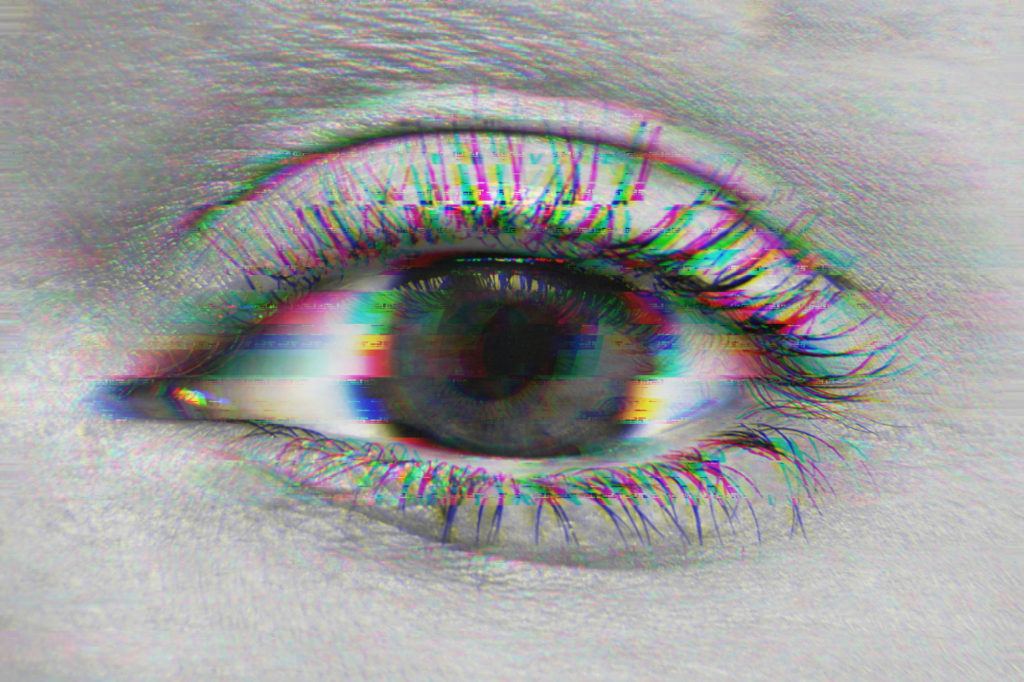
Psychedelics are going mainstream, with news features proclaiming they may hold the promise to heal trauma, offer alleviation from depression and anxiety, and the ability to help overcome addiction. With so much focus on the positive potential of psychedelics, people may naturally wonder about what is known regarding the drawbacks and the risks. Although studies have generally concluded that psychedelics are safe in the short- and long-term,1 there is at least one disorder that scientists track as a potential long-term adverse event.
As discussed in Part 1, Hallucinogen Persisting Perception Disorder (HPPD) is a clinically diagnosable disorder that involves distressing visual effects that last for long periods of time and that impairs normal functioning.2 HPPD is a poorly understood phenomenon, but researchers do have some insights about the causes, risk factors, and a few treatment options. There are also upcoming research projects that hope to shed more light on this topic.
What Causes HPPD?
HPPD can be triggered, or induced by a number of different compounds, but according to a review on the subject, LSD is the most common (37.1%).3 After that, cannabis (13.4%), MDMA (6.2%), and at much lower rates 2C-B, 2C-E, ayahuasca, ibogaine, ketamine, mescaline, psilocybin, and synthetic cannabinoids. It is interesting to note that HPPD has also been described in non-psychedelic substances, for example by people taking large doses of dextromethorphan (DXM), found in over the counter cold medications.4
Following the ingestion of one or more of those substances, symptoms can also be triggered by stressors,5 such as subsequent drug use.3 Cannabis was listed as the substance that worsened HPPD symptoms by most participants (60%) in one survey,6 while a review summarized that the use of natural and synthetic cannabinoids were the most common triggers for HPPD.7 Alcohol use has also been known to trigger HPPD.3
Psychological issues, such as depression and anxiety, can also trigger HPPD symptoms months or years after drug ingestion.3 In a self-reported survey, 100% of the 26 patients in one study with HPPD reported the preexistence of a mental condition, including mood disorders.8 Another study found that HPPD patients were five times more likely to report visual disturbances after experiencing stress.9 Users have also reported a variety of triggering events, such as entering a dark environment, sexual intercourse, flashing lights, and tobacco smoking, to name a few.5
Risk Factors and Reducing Risk
Some people may be more at risk or predisposed to developing HPPD, while performing certain behaviors may contribute to an increased likelihood of developing the disorder. Some of the risk factors for HPPD include:
- Pre-existing psychiatric conditions (i.e., schizophrenia, bipolar, major depression, anxiety)10
- Prior visual abnormalities, (i.e., eye floaters) or concentration problems6
- Tinnitus6
- Substance use disorder11
- Mixing more than one substance at one time10
- Younger age and early lifetime substance use9
In clinical trials involving a psychedelic, scientists reduce the risk of HPPD by excluding participants with severe psychiatric disorders. They also ensure that participants feel safe with the therapy team and are well prepared before the session.12 Outside of research settings, reducing risk for HPPD might involve refraining from drugs, especially during adolescence. One small survey found that when compared to the HPPD Type 1 group, the HPPD Type 2 group was younger, had tried LSD for the first time at an earlier age, and had done LSD more frequently.9 The researchers suggested that these factors during the period of adolescence may disrupt natural neurobiological processes.
Ed Prideaux, an advocate for HPPD awareness, suggested a few other ways to reduce risk in a harm reduction article13 and information guide14 written along with the Perception Restoration Foundation, a nonprofit dedicated to HPPD research. These include focusing on wellness the week after taking a drug to ensure perception returns to its baseline state, sleeping well, and doing integration work. Additionally, they suggested avoiding cannabis and other drugs, as well as avoiding stress, screens, and triggering environments.
HPPD Treatment and Outcomes
Because HPPD is a rare disorder and is not well-researched, there are no standard treatment options. Instead, people have reported using off-label medications and making lifestyle changes to alleviate their symptoms. It is important to note that treatment isn’t always necessary, as some have noted up to 50% of cases spontaneously resolve within a few months.15
Medications that have been used in case reports and open-label studies with some or mild success include antihypertensives (clonidine and lofexidine), antiepileptics (lamotrigine), benzodiazepines (clonazepam, alprazolam), and antipsychotics (risperidone, perphenazine, sulpiride, zuclopenthixol).7,11 A systematic review concluded that of the 57 identified case reports and case series that had received pharmacological treatment, 63.2% showed improvement with either full or partial remission and symptoms worsened in 7% of cases.3
According to “The HPPD Information Guide” produced by the Perception Restoration Foundation, psychological treatments such as counseling and integration may lessen the symptoms as stress, conflict, and overall mental and emotional health may have an influence on severity.14
Ongoing HPPD Research
Researchers still don’t know how HPPD occurs mechanistically, but David Nichols, Professor Emeritus of Pharmacology at Purdue University and Founder of The Heffter Research Institute speculates that perhaps HPPD is caused by the visual system in the brain becoming sensitized.16 Dr. Matthew Johnson thinks that there may be a very rare neurological susceptibility that might be precipitated by psychedelics and other non-hallucinogenic substances.17
This is why Macquarie University and the Institute for the Clinical Advancement of Neuroplasticity (ICAN) in Australia along with the Perception Restoration Foundation are collaborating with researchers from Harvard and Johns Hopkins to study the nature of HPPD. Professor Harry McConnell and Director of ICAN told Psychedelic Science Review, “We are investigating the possible causes and effects of HPPD with particular reference to what pathways in the brain might be involved with a view towards future studies on treatment of HPPD.”
Researchers are inviting anyone to fill out their online questionnaire and they will also be conducting a neuroimaging study involving magnetoencephalography, electroencephalography, and functional MRI to measure any changes in the visual pathways of the brain.18 The Perception Restoration Foundation is also collaborating with the University of Melbourne to create a screening tool that would allow someone to determine if they are an at-risk individual or if their symptoms would qualify as HPPD.19
The answer about whether psychedelics can cause long-lasting harm is still difficult to answer. With ongoing research projects and organizations like the Perception Restoration Foundation, there is a growing effort to uncover more details about this disorder such as its true prevalence. In the meantime, it may have to remain a matter of perception.
